No products in the cart.
Clothing is a form of self-expression. There are countless brands, styles, textures, colors, and “fits” to match exactly what kind of vibe you want to go with for the day. Whether you’re looking for something casual and comfortable or artistic mixed with vintage, there’s a line of fashion out there for you. Regardless of what’s in the closet, though, there could be a contaminant lurking within the fabric of your favorite sweater or dress pants. That musty odor you’ve been smelling? It could actually be mold on clothing.

We all have our own individual style, but mold on clothing is a harmful accessory that no one wants to add to their daily “getting ready” clothing routine. Just thinking about wearing moldy clothing is a little icky. Unfortunately for us, it can happen in the blink of an eye if we’re not aware of what to look for and how to prevent this fungus among us from making moves on our wardrobes.
Marc Jacobs said, “Clothing is a form of self-expression—there are hints about who you are in what you wear.” Here’s how to make sure mold on clothing isn’t that self-expression.
BREAKING THE UNFASHIONABLE MOLD
Before getting into details on how to get rid of and prevent mold on clothing, creating a better understanding of this fungus itself can help shed light on why each step should be taken.
Here’s the who, what, where, why, and how, of mold.
MOLD FAST FACTS
Over 100,000 mold species have been identified so far, and they all reproduce by producing microscopic spores that are released into the surrounding environment.¹’² It’s similar to how a plant produces seeds to grow an entirely new plant. Like a seed, these spores are non-living particles and will remain a spore until they land on a nice, habitable surface.
A mold spore only needs four main components to survive and thrive.³
THESE FOUR ELEMENTS ARE:
- Oxygen: this barely counts because they need so little, which is why mold can grow in walls
- Temperature: 40-90 degrees Fahrenheit is preferred, but some species can live in extremes
- Food: like teenagers, mold can eat pretty much anything
- Moisture: the often missing ingredient
Given these components for 24-48 hours, a mold spore will happily put down roots called hyphae and start growing on that surface. Once this growth starts to occur, the mold colony will begin reproducing and releasing more spores into the surrounding area. Some species of mold can also produce mycotoxins when they feel threatened, further adding to the volume of particles in the space.⁴
HOW DOES MOLD ON CLOTHING OCCUR?
Thanks to their tiny size, mold spores can end up relatively anywhere. They can fly right in through the front door, catch a ride on a pet’s fur, or zip right in through the sunroof of a car.
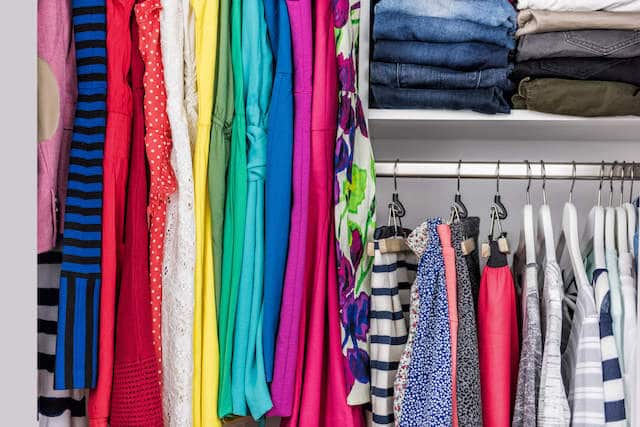
Now picture your clothing. Mold spores can be introduced while walking into work, listening to your favorite song in the car, or while grabbing something from the closet. Since these wardrobe items are constant companions and go where we go, there are a million opportunities for mold spores to slip right into the strands of fabric of whatever we’re wearing. Not to mention, those mold spores can zip right into wherever those clothing items are stored.
That means the only thing missing for a mold spore to colonize are the components needed for growth. Seeing that clothing is made of a bunch of fibers mold can eat and is constantly introduced to other yummy particles, it really all comes down to moisture.
As long as the components for life don’t exist, these spores will remain particles. Give a spore a piece of clothing that’s been wet for 24–48 hours and it will think it has won the lottery dream home. Before you know it, you’ll be staring down at mold on clothing and a health hazard nightmare.
MOLD ON CLOTHING: AN IMMUNE SYSTEM’S NEMESIS
As mold exists relatively everywhere across the planet, it’s impossible not to encounter a few spores, particles, and toxic byproducts throughout the day. Typically, this doesn’t cause a problem. The body’s immune system will deploy and get rid of them ASAP.
When living with a mold colony, though, the body isn’t just facing a couple of particles a day; it’s facing an entire army of particles every time it’s in the contaminated building. That’s a lot bigger of a task and can lead to the immune system getting overrun and malfunctioning, triggering a long list of symptoms. Mold toxicity can also work with other autoimmune conditions like Lyme, Candida, and CIRS to cause further harm to the body.
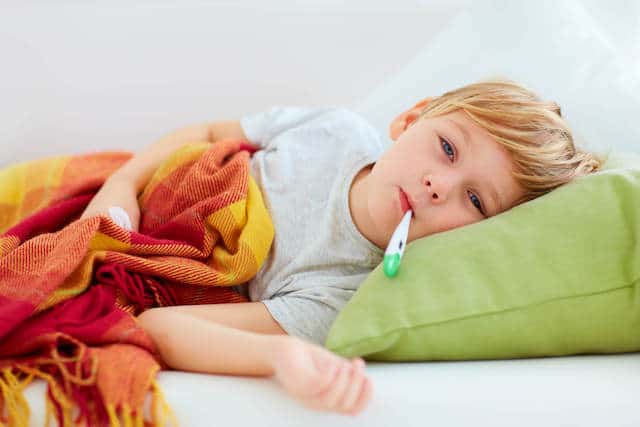
SOME SYMPTOMS OF MOLD EXPOSURE INCLUDE:
- Runny nose
- Rashes
- Hair loss
- Neurological issues
- Mood swings
- Watery eyes
- Cough
- Digestive problems
- Chronic fatigue
- Brain fog
- Respiratory issues
The tricky thing about exposure is that no two experiences are the same. Factors such as genetics, preexisting conditions, species of mold, presence of mycotoxins, immune system status, and volume of exposure all play a role.⁵’⁶’⁷’⁸’⁹ What they do know is that individuals with compromised or developing immune systems are at greater risk of developing symptoms faster and to a greater extent.
While some species of mold are naturally toxic and others can produce mycotoxins, they all have the potential to impact health. This potential impact is enough of a reason to avoid as much exposure as possible.
IS MOLD ON CLOTHING HARMFUL?
The simple answer is yes. As soon as that mold starts to grow, it releases spores (and potentially toxins) into the surrounding environment. That means that not only is the air around the individual with moldy clothes contaminated but the garment itself is also filled with harmful particles.
The key to mold’s ability to cause problems is the size of the specks involved. The particles in question are measured in a specific measurement unit called microns. A single micron is one-millionth of a meter. For a better perspective, you’d have to line up 1,000 microns in a row to equal the single distance between the two tiny lines on a ruler.
As for this fungus among us, mold spores average between 1-20 microns, and mycotoxins average 0.1 microns. Such a small size means they qualify as a group of particles the EPA dubbed particulate matter. They further break down into two categories, both of which are inhalable.¹⁰
THESE CATEGORIES ARE:
- PM10: particles that have a diameter of around 10 micrometers or less.
- PM2.5: fine particles that have a diameter of around 2.5 micrometers or less.
Their teeny size means that anytime someone is dealing with mold on clothing, they’re not only breathing in the particles released into the air but also having direct skin contact as well. Any cut or lesion is an open invitation for those particles to make their way inside of the body and wreak havoc.
That’s why any instances of mold on clothing should be handled quickly and correctly.
MOLD ON CLOTHING 101
Mold on clothing is something no one wants to deal with. That being said, it can happen to anyone, making it something we should all know how to properly handle.
The first step is to determine if there’s a moldy problem in the first place. This process relies on the use of the senses.
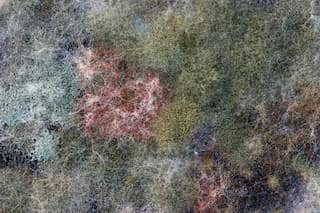
WHAT DOES MOLD ON CLOTHING LOOK LIKE?
With so many different species in the world, mold on clothing can come in all sorts of colors and textures. It’s kind of like the Skittles of nature. These can include yellow, green, grey, white, black, brown, red, or a combination of colors. No single color indicates a more dangerous species, even though one of the most commonly discussed scary molds is “toxic black mold.” While that specifically refers to Stachybotrys chartarum, many other species can be black as well.
As for texture, the mold growth could seem powdery, slimy, fluffy, or velvety. Again, no specific texture dictates whether or not the mold is dangerous.
Any visible sign of mold growth indicates a serious contamination problem.
WHAT DOES MOLD ON CLOTHING SMELL LIKE?
Not all mold growth is visible at first. Thanks to the small size of spores, mold can take some time before it’s colonized enough to be visible to the naked eye. Colors also play a role. Depending on the color of the mold species, it could blend in with the fabric and not be easily noticeable.
When either scenario occurs, use your nose to determine if there’s mold on clothing. Mold colonies often release a musty, damp, earthy scent while growing, signaling that there’s a contamination problem within the garment. If this is present, it’s a good indicator that something’s not quite right with that piece of clothing.
WHAT IF NEITHER IS PRESENT?
If there’s no visible growth or smell, that doesn’t always mean that there’s no issue. Mold is a seriously pesky fungus. If you’re still pondering whether or not there’s a problem, pay attention to how your body feels while wearing certain items of clothing. Our bodies are amazing warning systems that will tell us if something just isn’t quite right. If you notice any chronic symptoms that seem to get worse when you wear those garments or when you go into the closet or open a drawer, that could indicate an environmental contamination issue.
Never ignore your body when it’s showing you that something is wrong. That can lead to never-ending symptoms or other autoimmune conditions developing.
HOW TO GET RID OF MOLD ON CLOTHING
Sadly, the best way to get rid of mold on clothing is to throw that contaminated item out.
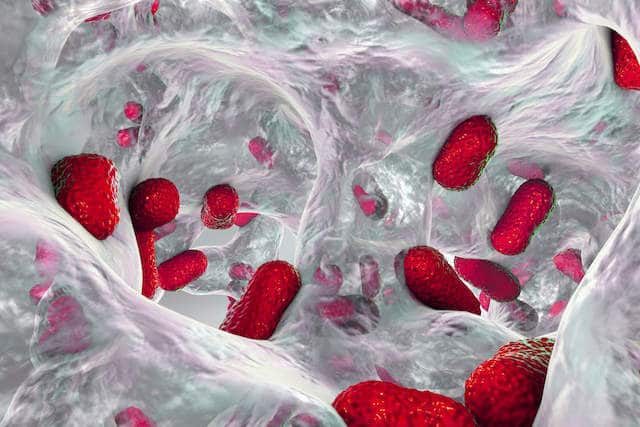
Once mold starts to colonize, those roots will grow deep into the fibers of whatever surface it’s on. For porous items like clothing, that leads to moldy roots throughout the fibers of the garment. On the other hand, that living mold is also releasing spores and potentially toxins into the surrounding area and into the clothing item. Thanks to their small size, many of these particles can embed themselves deep within the fibers of the fabric as well.
At the end of the day, this infestation of moldy particles makes it incredibly difficult to completely decontaminate the item. For hypersensitive individuals feeling the effects of toxicity, any exposure to these particles can allow those chronic symptoms to continue. As the EPA says, even dead mold can trigger adverse health reactions, which is why bleach is not on the recommended list for mold-fighting products.¹¹
To ensure that exposure actually stops, that clothing item has got to go. The battle doesn’t stop there, though. Once it’s outside in the garbage, all of the contamination created by the mold on clothing has got to go. Remember, those particles can get everywhere.
TO GET RID OF THIS CONTAMINATION:
- Put on protective gear
- Use a HEPA vacuum on all surfaces of the room
- Spray all non-porous surfaces with a botanical cleaner like Benefect Decon 30.
- Let this sit for a few minutes, and then wipe away with a microfiber towel
A few notes:
- HEPA vacuums are required to remove at least 99.7% of particles up to 0.3 microns in size, but the smaller particles the filter can eliminate, the better.¹²
- Microfiber towels are 100 times more efficient than regular rags at wiping away small particles.
- Complete the wipe-down process at least three times to ensure hard-to-remove particles such as mycotoxins and bacteria are eliminated.
- It’s best to get rid of as many exposed porous items as possible, especially for hypersensitive individuals. That being said, if you want to try to clean these items:
- Throw all of the exposed clothing in the wash with a botanical cleaning product like EC3 Laundry Additive.
- Thoroughly use a HEPA vacuum on any porous furniture items.
- Re-introduce the items slowly to make sure they don’t trigger the reaction.
FIND THE SOURCE
One of the top priorities during this process is finding the source that led to the mold in the first place. It could just be the result of a wet garment and a lucky mold spore, but check wherever the clothing was kept to determine if there’s a leak or some other moisture-related event. It’s always better to be safe than sorry.
If mold on clothes continues to be an issue but you can’t find the problem, it’s time to call a qualified professional to come in and assess the home to see if there’s a hidden problem.
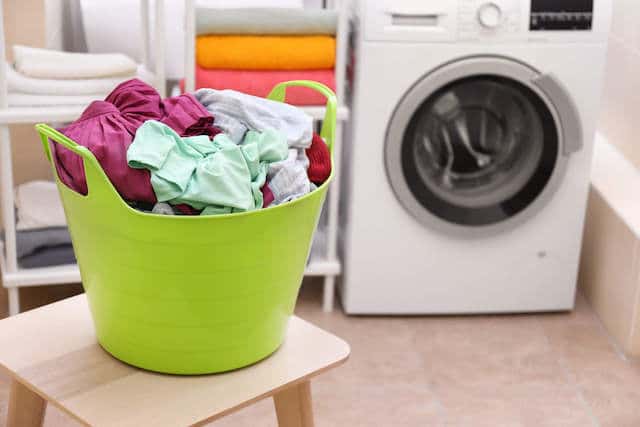
PREVENTING MOLD ON CLOTHES
No one wants to wear moldy clothing or deal with the health effects, which makes avoiding the fungal issue a priority. When it comes to preventing mold growth, the ultimate goal is to remove the elements needed for growth and actively work to eliminate all particles from the indoor environment.
STEPS TO PREVENT MOLD ON CLOTHING INCLUDES:
- Keep clothing dry: Whether getting them out of the dryer or coming in from the rain, make sure that clothing dries quickly and completely before placing them in storage. Remember, mold only needs 24-48 hours to start growing.
- Wash all clothing with a botanical cleaner like EC3 Laundry Additive: Mold spores will inevitably make their way into your clothing. Using a product like EC3 helps remove as many microscopic particles as possible from the garments, reducing the opportunity for mold on clothes to occur.
- Maintaining low indoor humidity: Aim for a humidity level of 30 to 50%.¹³ The lower the level, the fewer opportunities there are for mold to grow. If humidity remains high, consider purchasing a dehumidifier and throwing in desiccants like silica gel packets into the closet, dresser, or storage bin to help remove as much moisture as possible.
- Invest in air purification: Whether a whole-home unit or a portable one for the room, these machines will help remove all of those harmful particles from the air, including mold spores. The fewer mold spores in the indoor environment, the fewer opportunities for mold on clothing. Make sure to go with a unit that will actually filter out these particles, though.
- Clean the storage areas: Remove all of the items from the closet, dresser, armoire, etc. Use a HEPA vacuum cleaner on every inch of the space and then follow up with a botanical cleaner depending on the surface you’re working on. While cleaning, check for any hidden mold issues or leaks/water issues that could lead to mold on clothes.
- Prioritize airflow: Creating airflow helps remove any humid air and decreases particle buildup. This step can include opening closet doors and drawers, reducing the number of items in direct contact with the floor, and opting for wire racks. Whatever you can do to get that air moving.
- Keep dirty clothes out of the closet: Dirty clothes can contain moisture, particles, and mold spores that can lead to mold growth and contamination of your clothing storage area. Keeping these separate reduces the risk of cross-contamination and helps keep that indoor environment squeaky clean.
The list above isn’t exhaustive, but it’s a great place to start to help avoid mold on clothing and the health effects that can go along with it.
HEALTH FASHION CHOICES

Chances are, mold on clothing isn’t typically on the brain until you’re staring at a shirt covered in a suspicious-looking fungus. Since this indoor contaminant can directly affect our health, though, it’s something everyone should know how to properly handle and avoid. Not to mention, wearing moldy clothes is just cringy.
Building mold awareness and learning to keep our indoor environments safe is all about the little steps. Preventing moldy clothes happens to be an amazing addition to ensuring environmental factors like this fungus among us aren’t making us ill. Plus, contaminated items aren’t really the ideal fashion trend for anyone out there.
Health begins at home.™
- Environmental Protection Agency. (n.d.). Mold. EPA. Retrieved from https://www.epa.gov/mold.
- Centers for Disease Control and Prevention. Basic facts about mold and dampness. Centers for Disease Control and Prevention. Retrieved from https://www.cdc.gov/mold/faqs.htm.
- Lstiburek, J., Brennan, T., & Yost, N. (2002, January 15). Rr-0208: What you need to know about mold. Building Science Corporation. Retrieved from, https://www.buildingscience.com/documents/reports/rr-0208-what-you-need-to-know-about-mold/view.
World Health Organization. (n.d.). - Mycotoxins. World Health Organization. Retrieved from https://www.who.int/news-room/fact-sheets/detail/mycotoxins.
- Environmental and Occupational Health Assessment Program, & Environmental and Occupational Health Assessment Program, & Health Science Section, Mold Basics for Primary Care Clinicians (2009). Hartford, CT; Connecticut Department of Public Health. , H. S. S., Mold Basics for Primary Care Clinicians 1–10 (2009). Hartford, CT; Connecticut Department of Public Health.
- Curtis, L., Lieberman, A., Stark, M., Rea, W., & Vetter, M. (2004). Adverse health effects of indoor molds. Journal of Nutritional & Environmental Medicine, 14(3), 261-274.
- Bush, R. K., Portnoy, J. M., Saxon, A., Terr, A. I., & Wood, R. A. (2006). The medical effects of mold exposure. Journal of Allergy and Clinical Immunology, 117(2), 326-333
- Fisk, W. J., Lei-Gomez, Q., & Mendell, M. J. (2007). Meta-analyses of the associations of respiratory health effects with dampness and mold in homes. Indoor air, 17(4), 284-296.
- Wild, C. P., & Gong, Y. Y. (2010). Mycotoxins and human disease: a largely ignored global health issue. Carcinogenesis, 31(1), 71-82.
- EPA. (n.d.). Health and Environmental Effects of Particulate Matter (PM). EPA. Retrieved from https://www.epa.gov/pm-pollution/health-and-environmental-effects-particulate-matter-pm.
- EPA. (n.d.). Should I use bleach to clean up mold? EPA. Retrieved from https://www.epa.gov/mold/should-i-use-bleach-clean-mold.
- EPA. (n.d.). What is a HEPA filter? EPA. Retrieved from https://www.epa.gov/indoor-air-quality-iaq/what-hepa-filter-1.
- EPA. (n.d.). A Brief Guide to Mold, Moisture, and Your Home. EPA. Retrieved from https://www.epa.gov/mold/brief-guide-mold-moisture-and-your-home#tab-6.
Still Have Questions?
A member of our team is here to help! Click on “Get Started ➤” below to book a consultation with a member of the HOMECLEANSE team. We have a few quick questions that will help us put together a roadmap to solve or prevent all of your mold problems.
Two minutes of your time could lead to better health for you and your family.
